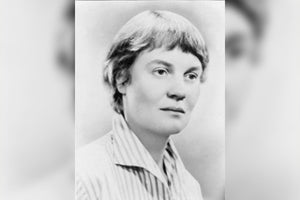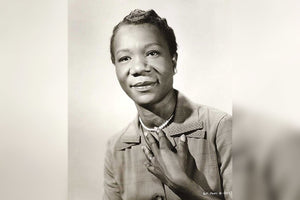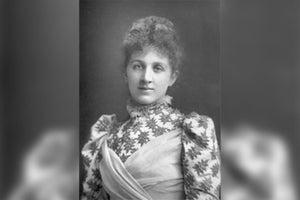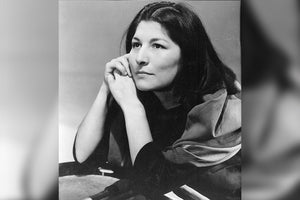Early Life
Clara Barton was born of Stephen and Sarah Barton on 25th December 1821 in Massachusettes, USA. Her parents named her after a character in the Novel titled Clarissa was written by Samuel Richardson. Her father was a politician and a soldier who worked under General Anthony Wayne. He instilled patriotism in his daughter which was to be seen in her later life. She also grew to be a timid young girl.
Five Facts about Clara Barton:
- Clara Barton was the youngest of her family. She had 4 other siblings.
- Clara was considered as very shy and timid towards strangers.
- Clara started working as a teacher at the young age of 17 years old.
- Her teaching career lasted for 12 years.
- Clara was very effective when it comes to managing badly behaved students, especially boys.
Inspirational Quotes From Clara Barton:
“This conflict is one thing I've been waiting for. I'm well and strong and young - young enough to go to the front. If I can't be a soldier, I'll help soldiers.”
“I may sometimes be willing to teach for nothing, but if paid at all, I shall never do a man's work for less than a man's pay.”
“Everybody's business is nobody's business, and nobody's business is my business.”
School Life
Clara Barton started school at the age of three where she became a top reading and spelling student. At school, she only had one close friend, Nancy Fits since her timidity kept her from socializing. She later joined the Colonel Stones High School, where her parents thought her timidity would be cured.
On the contrary, she grew even more timid, suffered depression, and was unable to eat. Consequently, she went back home to recuperate.
Later in life, her parents persuaded Barton to become a school teacher to help overcome her timidity. In 1839, while only 17 years old, Barton achieved her first teaching certificate. In 1851, following the death of her mother, she enrolled at the Clinton Liberal Institute to pursue writing and languages.
Professional Life
In 1838, Barton she started working as an educator and served in various schools in Canada for 12 years. She loved the teaching profession and conducted a redistricting campaign to allow workers’ children receive an education. Upon completing various successful projects, she gained the confidence to demand equal teaching pay.
She also taught at Hightstown where she realized that the neighboring city, Bordentown had no public schools. She was to later get the contract in 1852 to open a free school in this city. This was New Jersey’s first-ever free school. Within one year, the school had over 600 students, forcing Barton to hire another teacher.
She and the other teacher earned $250 in a year. Their accomplishment encouraged the town to build a new school building that cost nearly $4000. However, once the building was completed, the school board felt the leadership position was unfitting for a woman. They replaced her with a man and was demoted to an assistant. This position involved working in an extremely harsh environment that led her to a nervous breakdown. She eventually decided to quit.
In 1855, Barton started working in the US Patent Office as a clerk. She was the first woman in the federal government to receive a clerkship. Her salary here equaled that of a man. However, the male clerks abused and slandered her for three years.
Consequently, amidst political opposition against women who worked in government offices, she was demoted to a typist. In 1856, she was fired due to her “Black Republicanism”. She however got her job back, but as a temporary typist in 1856 after Abraham Lincoln’s election to office.
Compassion for Humanity
During the Baltimore Riot on 19th April 1861, many people shed blood and many lost lives. The victims of the riot from Massachusetts were taken to Washington DC. At this time, Barton lived here. In the spirit of service to humanity, she went to the railway station where she nursed 40 of the injured men.
She and other women took care of the wounded soldiers by providing food supplies, clothing and nursing them. Although she did this for free, she learned how to safely and efficiently store and distribute medical supplies.
She also helped the men in uniform in high spirits by providing emotional support. From this incident, she started engaging in army work and would collect medical supplies for the soldiers. Barton also stored the supplies in her quarters and distributed them with the help of her friends. This was however amidst opposition by the war and field surgeon departments. In 1862, Quartermaster Daniel Rucker permitted her work with the caregivers on the front line.
In 1869, Barton traveled to Geneva, Switzerland where she was introduced to the humanitarian organization, Red Cross. She also met Dr. Appia who later invited her to represent the Red Cross branch in America. He would also assist her to find financial benefactors that would help start the American Red Cross.
In 1870, as the Franco-Prussian war started, Barton helped the duchess to prepare a military hospital. She also aided the Red Cross society in a big way during this war.
After returning to America, Barton led a movement to make the International Committee of the Red Cross known by the American government. She later started working on this project in 1873. The Red Cross made huge strides in growing its popularity among Americans. Later, Barton was elected the president of the American branch of the Red Cross. The first red Cross Society was later formed on 22nd August 1881.
Death
Clara Barton died in Glen Echo, Maryland in the USA on the 12th of April 1912, at the age of 90 years.
![]() Fast Shipping
Fast Shipping![]() Subscribe to our Newsletter
Subscribe to our Newsletter![]() 🌟 New Global Competition 🌟
🌟 New Global Competition 🌟















